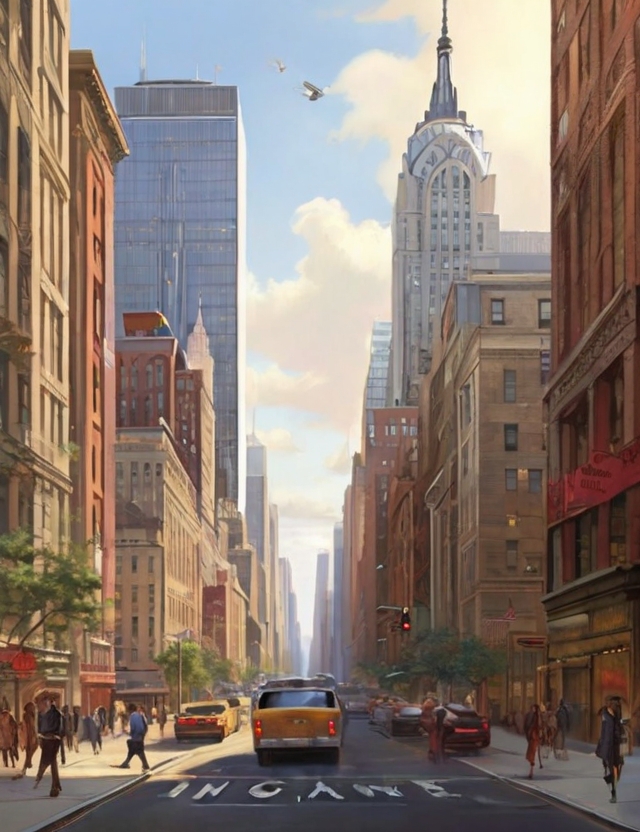
Manhattan is a city of many names, each one revealing a different facet of the city’s vibrant history and cultural significance. From the iconic “Big Apple” nickname to lesser-known monikers like “The City that Never Was,” Manhattan’s nicknames are as diverse and multifaceted as the city itself. Join us on a journey to uncover the origins of these unique monikers and discover the stories behind the nicknames that define New York’s most famous borough.
Key Takeaways
- Manhattan has a rich tapestry of nicknames that reflect its diverse history and cultural significance.
- The Big Apple is one of Manhattan’s most famous and enduring monikers, but there are many others to explore.
- The origins of Manhattan’s nicknames are complex and often rooted in cultural influences and historical events.
- Each nickname offers a unique glimpse into the spirit and identity of this iconic city.
- Embark on your own urban journey and discover the magic behind these monikers that continue to shape the identity of Manhattan.
The Melting Pot: Manhattan’s Diverse Nicknames
Manhattan is a cultural melting pot, and this diversity is reflected in the city’s vast array of nicknames. From the “City That Never Sleeps” to the “Capital of the World,” each moniker has a unique origin story rooted in the cultures and languages of the people who shaped the city.
One of the most famous nicknames for Manhattan is the “Big Apple.” While the origin story is debated, some believe it came from the Jazz Age, where musicians referred to New York City as the “big time,” and the “Big Apple” was a term reserved for the juiciest gigs in the city. Others believe it may have originated from the horse racing industry, where “apple” was a term used to describe the prizes at races, with the big apple being the most sought-after.
Manhattan’s diversity is also reflected in the nickname, “The Melting Pot.” The term was first popularized by Israel Zangwill’s play of the same name, which explored the assimilation of different ethnic groups into American culture. The nickname quickly caught on, reflecting the city’s reputation as a place where diverse cultures coexist and thrive.
Other notable monikers include the “City of Dreams,” which references the city’s history as a gateway for immigrants pursuing the American Dream. “Gotham,” a nickname popularized by Washington Irving in the early 19th century, pays homage to the city’s Dutch roots, where “Gotham” translates to “Goat’s Town.”
The Bottom Line
Manhattan’s diverse range of nicknames reflects the city’s vibrant and multicultural history. From the “Big Apple” to “Gotham,” each moniker tells a unique story about the people and cultures that have shaped the city over time.
Wall Street’s Influence: Financial Nicknames of Manhattan
Manhattan’s financial district has been at the heart of New York’s economy for centuries, and its influence has led to several financial nicknames associated with the area.
One of the most common nicknames is “Wall Street,” which refers to the street where the New York Stock Exchange and other financial institutions are located. Interestingly, it was once an actual wall built by Dutch settlers to protect the city in the 17th century.
Another financial nickname for Manhattan is “The Financial Capital of the World.” The nickname came about in the late 20th century, when the city surpassed London as the world’s financial capital.
In addition to these nicknames, Manhattan is also known as “The Center of the Universe” in financial circles. This title refers to the city’s status as a hub for global finance, with many of the world’s largest financial institutions and corporations based in Manhattan.
The financial nicknames associated with Manhattan are a testament to the city’s economic power and influence throughout history.
Conclusion
Manhattan’s nicknames offer a fascinating glimpse into the city’s vibrant history and cultural significance. As we’ve explored in the previous sections, these monikers tell the story of a diverse and prosperous city that has influenced the world in countless ways.
From the Big Apple to the Capital of the World, each nickname reflects a unique aspect of Manhattan’s character. The city’s position as a global financial powerhouse is also evident in the nicknames associated with Wall Street, from the Financial Capital of the World to the Center of the Universe.
Whether you’re a native New Yorker or a visitor to the city, exploring Manhattan’s nicknames is a must. You’ll gain a deeper appreciation for the city’s rich heritage and vibrant cultural tapestry. So next time you find yourself in the city that never sleeps, take a moment to uncover the magic behind these monikers that continue to shape the identity of Manhattan.
FAQ
What are some popular Manhattan nicknames?
Some popular nicknames for Manhattan include the Big Apple, the Capital of the World, the Concrete Jungle, and the Center of the Universe.
How did Manhattan get the nickname “the Big Apple”?
The nickname “the Big Apple” originated in the 1920s from African American jazz musicians in reference to the city’s vibrant music scene. It gained popularity in the 1970s as a promotional campaign by the New York Convention and Visitors Bureau.
Are there any nicknames related to Manhattan’s diverse population?
Yes, Manhattan is known as the Melting Pot due to its diverse range of cultures and communities. This nickname represents the fusion of various ethnicities, languages, and traditions that coexist in the borough.
What is the significance of Wall Street in Manhattan’s nicknames?
Wall Street, located in the Financial District of Manhattan, is often associated with nicknames related to finance and economic power. Some of the notable financial nicknames include the Financial Capital of the World, the Wall Street Canyon, and the Center of Money Power.
How do Manhattan’s nicknames reflect its history and culture?
Manhattan’s nicknames reflect the rich history and cultural significance of the borough. Each nickname carries a unique story, representing aspects such as its vibrant music scene, diverse population, and economic prowess. These monikers have become integral to the identity of Manhattan.
 Moshpitopen Your Ultimate Destination for Fashion, Travel And Education
Moshpitopen Your Ultimate Destination for Fashion, Travel And Education
